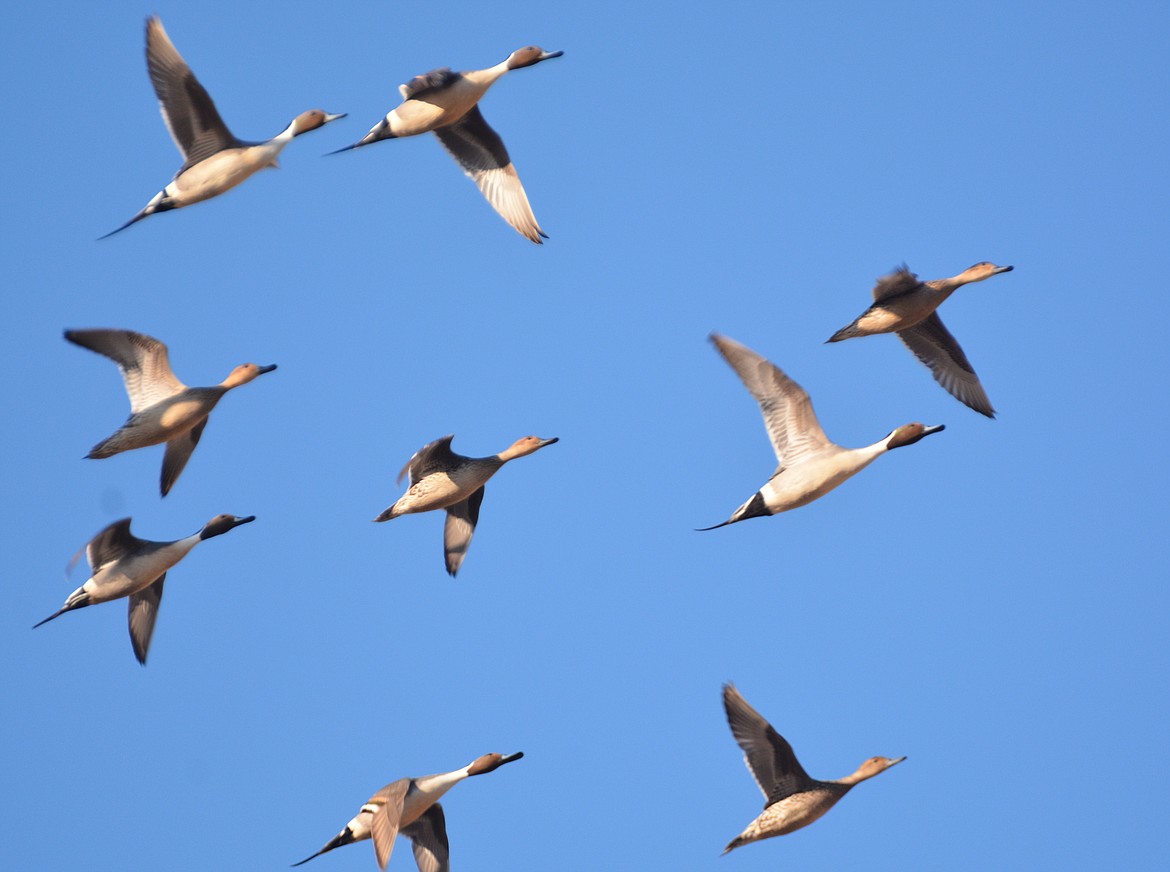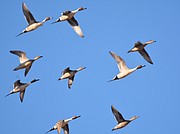Northern pintail duck: The greyhound of the air!
Don Bartling | Hagadone News Network | UPDATED 5 years, 9 months AGO
“Advice from a duck; dive into your life, let troubles roll off your back, take time to preen, look beneath the surface, shake your tail feathers and don’t quack up!”
— Yourtruenature.com
When I visited the McArthur Lake Wildlife Management Area, the Kootenai National Wildlife Refuge and the Boundary Creek/Smith Creek Wildlife Management Area last week I saw many waterfowl migrating north to Alaska and the Arctic tundra.
I was interested to see one species of duck, in particular, that usually migrates first in the spring and fall — “the greyhound of the air,” the northern pintail.
Northern pintails are elegant, long-necked ducks with a slender profile, larger than a green winged teal and smaller than a mallard. The tail is long and pointed, but it is much longer and more prominent on breeding males than on females and non breeding males. In flight, the wings are long and narrow.
Breeding male northern pintails stand out with a gleaming white breast and a white line down their chocolate brown head and neck. Females and males that are molting (eclipse plumage) are mottled in browns and whites with an unmarked pale tan face and a dark bill. In flight, males flash a green speculum (the inner wing feathers or secondaries) and females flash a bronzy speculum.
Northern pintails dabble on the surface of the water and filter out seeds and insects with their bills. The long neck of the pintail allows it to dabble for food that may be up to one foot under water, which is beyond the range of several other dabbling ducks, like mallards. They also waddle at the edges of wetlands and through agricultural fields feeding on grain and insects. They form large groups and readily associate with other ducks during the nonbreeding season.
Northern pintails nest in seasonal wetlands, croplands, grasslands, wet meadows, and shortgrass prairies. They forage in nearby shallow wetlands, lakes, and ponds. They spend the nonbreeding season in similar areas and flooded agricultural fields.
The Northern pintail duck (Anas acuta) gets its nickname “the greyhound of the air” due to their swift and elegant appearance in flight and are capable of flying up to 65 miles per hour. The pintail is a medium to large sized migratory duck that gets its name from the long tail feathers found on the male of the species, which may measure up to ¼ of the Pintail Drake’s length.
Pintail ducks are not very vocal most of the time, but when they are, the females vocalization is a hoarse “quack,” while the males is a whistle-like “kwee” sound.
The northern pintail has a wider range than any other duck. They have been found on every continent except Antarctica, and are known to winter and breed on all continents except for Australia and Antarctica. They can be found throughout North America, and have breeding grounds in Alaska, Canada, the west coast, and the central and northern portions of the United States.
Northern pintails (also known as “sprig,” “spike” and “spiketail”) are enduring fliers and are known to make trans-Atlantic flights, as birds tagged on the east coast of North America have been found days later in Europe.
The oldest recorded age of a pintail duck is 27 years, five months.
Whenever possible get outside and enjoy the outdoors!
ARTICLES BY DON BARTLING

Myrtle Falls Trail: A short hike with a spectacular view

Common mullein: An amazing, versatile plant
As I was taking a walk earlier this summer, I noticed along the bank of the Kootenai River some green, soft-looking plants which appeared to be the lambs-ear plant, with which many of us are familiar.

Dog days of summer are upon us
According to Wikipedia “The dog days or dog days of summer (July 22, 2020-Aug. 22, 2020) are the hot, sultry days of summer. They were historically the period following the heliacal rising of the star system Sirius, which Hellenistic astrology connected with heat, drought, sudden thunderstorms, lethargy, fever, mad dogs, and bad luck.”



